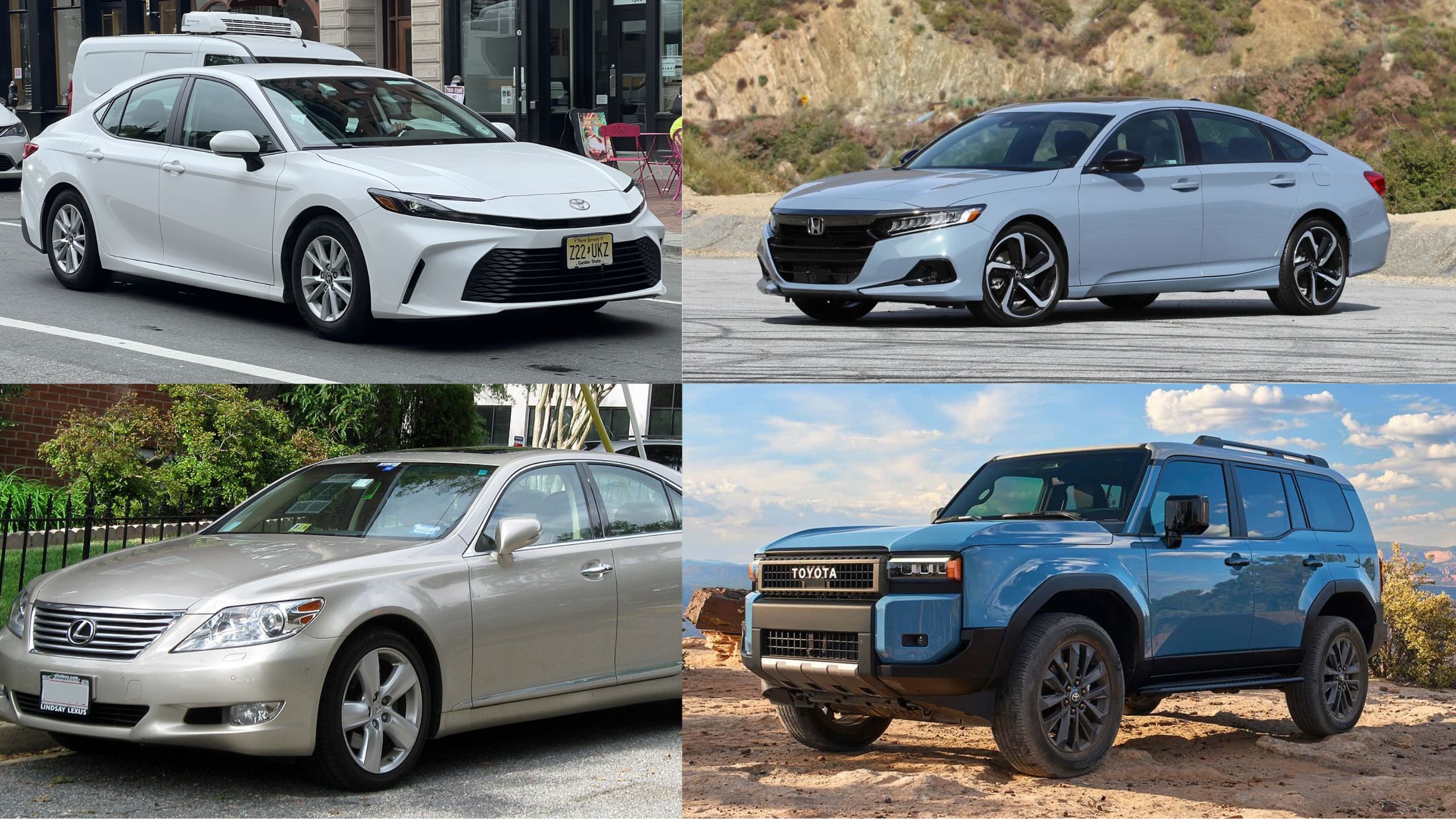Purchasing a vehicle represents one of life’s significant investments, making longevity a crucial factor in the decision-making process.
While the average modern vehicle can reliably reach 150,000-200,000 miles with proper maintenance, some exceptional models consistently surpass the 250,000-mile threshold while maintaining their performance and reliability.
Conversely, certain vehicles develop concerning issues far earlier in their lifespan, leading to frustrating ownership experiences and premature visits to the junkyard.
This guide examines five vehicles renowned for their extraordinary longevity cars and trucks that regularly eclipse the quarter-million-mile mark while requiring only routine maintenance and contrasts them with five models that have earned reputations for premature mechanical failures, persistent issues, and shortened lifespans.
Understanding these distinctions can help prospective buyers make informed decisions that align with their long-term ownership goals, potentially saving thousands in unexpected repair costs while providing reliable transportation for many years to come.
Cars That Still Drive Well Over 250K Miles
1. Toyota Land Cruiser
The Toyota Land Cruiser stands as perhaps the ultimate testament to automotive longevity, with countless examples surpassing 300,000 miles and many reaching the rarefied air of 500,000 miles or more.
This legendary SUV’s extraordinary durability stems from Toyota’s uncompromising engineering philosophy that prioritizes reliability over cutting-edge features.
The Land Cruiser’s 5.7-liter V8 engine (in recent North American models) and its predecessor powerplants are deliberately under-stressed, operating well within their mechanical limits even when tackling challenging terrain or hauling heavy loads.
What separates the Land Cruiser from typical high-mileage vehicles is its ability to maintain exceptional performance and comfort even after decades of use.
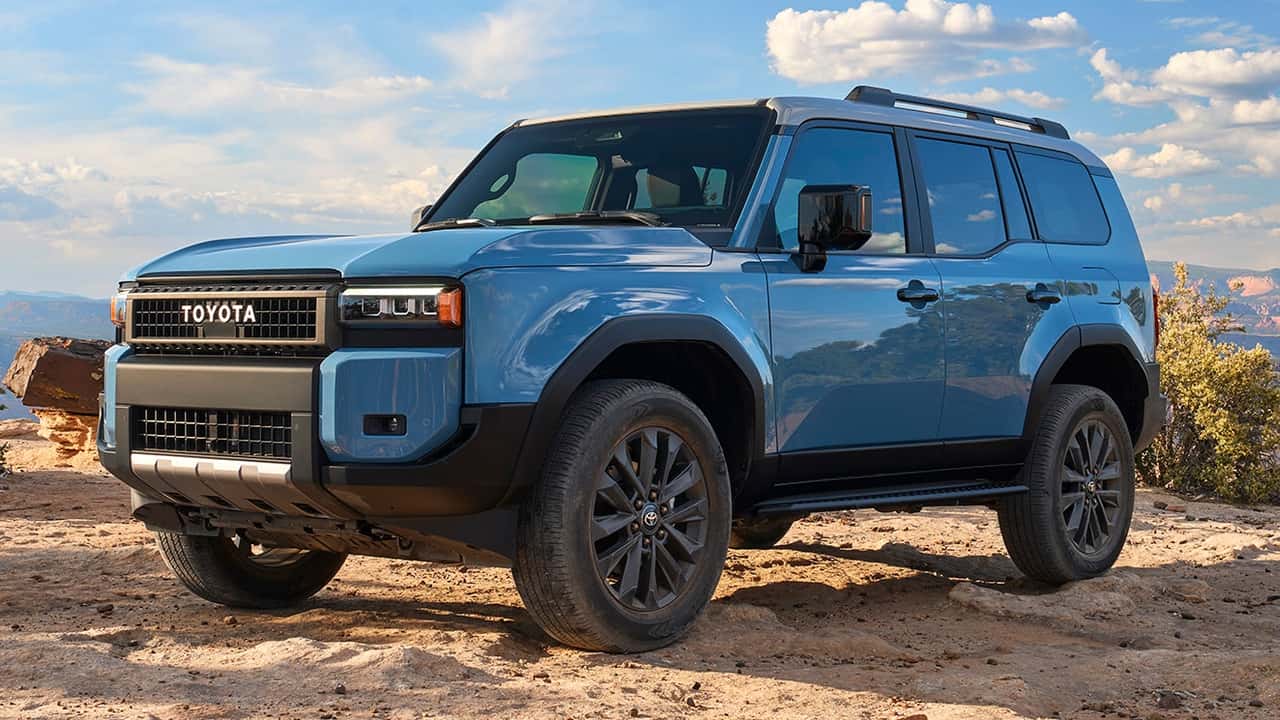
The vehicle’s body-on-frame construction provides exceptional structural integrity, while its conservative design updates ensure parts compatibility and technician familiarity across generations.
Toyota’s systematic approach to component redundancy means critical systems have secondary backups, particularly evident in its robust electrical architecture and cooling systems.
Owners report that regular maintenance primarily fluid changes, timing belt replacements (on older models), and attention to the vehicle’s complex four-wheel-drive system typically keeps these vehicles performing like new well past the point where most competitors would require major overhauls.
The Land Cruiser’s proven durability is reflected in its exceptional resale value, with high-mileage examples often commanding prices that would be unthinkable for other vehicles of similar age and use.
For those seeking a vehicle that can truly last a lifetime, the Land Cruiser represents the gold standard of automotive longevity.
2. Honda Accord
The Honda Accord has cemented its reputation as the quintessential long-lasting family sedan, with countless examples cruising past 250,000 miles while maintaining their composed driving dynamics and comfortable cabins.
Honda’s engineering excellence is particularly evident in the Accord’s powertrains, where both the naturally-aspirated four-cylinder and V6 options (and more recently, turbocharged offerings) demonstrate remarkable durability through a combination of precision manufacturing and innovative design elements that reduce mechanical stress.
What truly distinguishes the Accord is its ability to maintain its original character even at astronomical odometer readings. Drivers report that 300,000-mile examples often retain the same tight steering feel, responsive handling, and smooth transmission shifts as when they left the dealership.
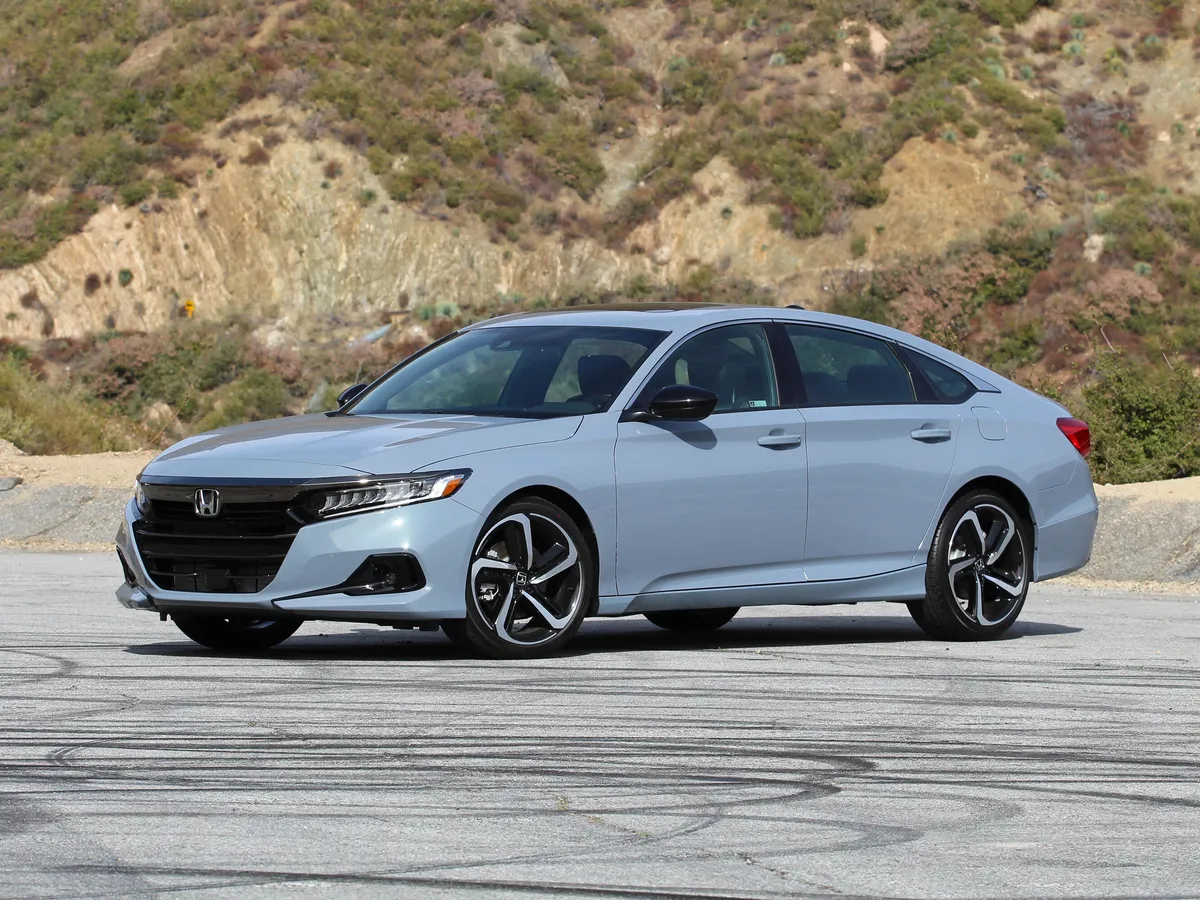
This preservation of driving dynamics stems from Honda’s holistic approach to engineering, where components are designed to wear at similar rates and maintain their functional relationships throughout extended service lives.
The vehicle’s electrical systems exhibit similar durability, with dashboard electronics and amenities typically functioning flawlessly long after competing models develop frustrating gremlins.
Perhaps most impressively, high-mileage Accords tend to maintain their structural integrity and cabin quality, with minimal rattles, squeaks, or deterioration of interior materials.
Owners attribute this exceptional longevity to following Honda’s maintenance schedule, particularly regarding transmission fluid changes and timing belt replacements on older models, along with addressing minor issues before they cascade into larger problems.
For buyers seeking a reliable daily driver that can potentially last decades, the Accord remains the benchmark against which other mainstream sedans are measured.
3. Toyota Camry
The Toyota Camry has rightfully earned its status as the definitive reliable family sedan, with a reputation for durability that sees countless examples surpassing 300,000 miles while continuing to provide dependable transportation.
At the heart of this extraordinary longevity lies Toyota’s legendary 2.5L four-cylinder and 3.5L V6 engines, which feature conservative tuning, robust internal components, and efficient cooling systems that minimize long-term wear.
These powerplants often reach astronomical mileages without ever requiring internal repairs, with many owners reporting nothing more than routine maintenance across decades of ownership.
What separates high-mileage Camrys from their competitors is the vehicle’s holistic durability extending far beyond just the engine.
The transmission systems, particularly the conventional automatic transmissions Toyota employed before the wider adoption of CVTs, demonstrate remarkable resilience even under demanding conditions.
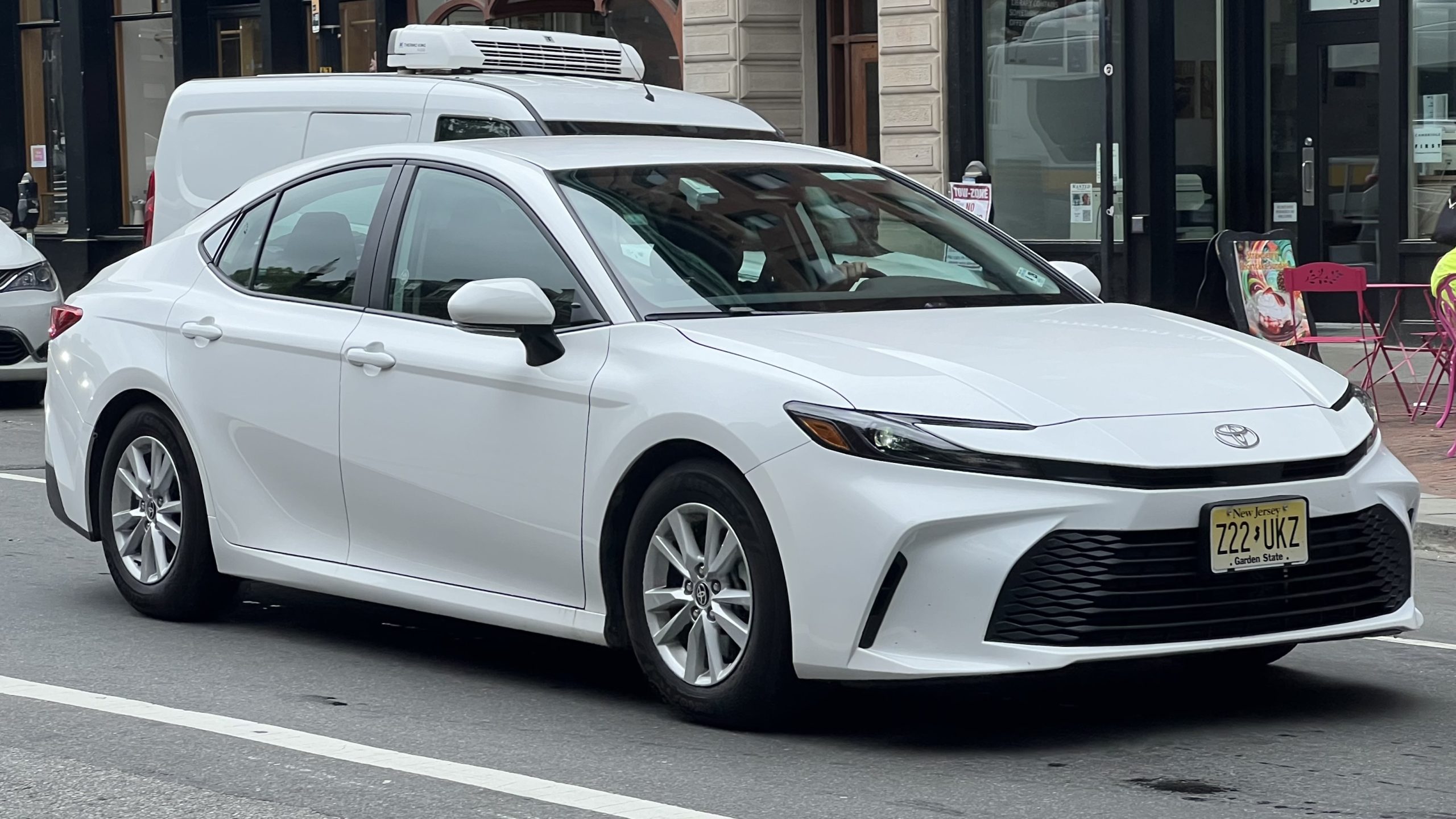
Electrical components and accessories typically function flawlessly well past the point where rival vehicles develop cascading electronic failures.
Even the Camry’s often-overlooked structural elements maintain their integrity, with suspension mounting points, chassis components, and body seals continuing to perform their functions with minimal degradation.
The ownership experience of high-mileage Camrys is further enhanced by Toyota’s industry-leading parts commonality and availability.
When components eventually require replacement after hundreds of thousands of miles, owners benefit from reasonable repair costs and straightforward servicing procedures.
This accessibility, combined with the vehicle’s inherent durability, explains why so many Camrys remain in daily service long after their original purchase date.
For buyers prioritizing long-term reliability over flash and trends, the Camry represents perhaps the safest bet in automotive longevity, offering a compelling blend of durability, comfort, and reasonable operating costs that continues to win over practical-minded consumers decade after decade.
4. Lexus LS
The Lexus LS series stands as the definitive proof that luxury and longevity need not be mutually exclusive concepts in the automotive world.
Since its revolutionary introduction in 1989, the LS has consistently demonstrated an ability to accumulate stratospheric mileage while maintaining the silent cabin, buttery-smooth ride, and impeccable fit and finish that defined it when new.
The heart of this extraordinary durability lies in Lexus’s approach to engineering particularly evident in the legendary 4.0L 1UZ-FE V8 (in earlier generations) and subsequent powerplants that were deliberately overbuilt and underworked, operating well below their mechanical stress thresholds even when delivering luxury-level performance.
What truly separates high-mileage LS models from other luxury offerings is their remarkable preservation of character and quality years beyond their expected service life.
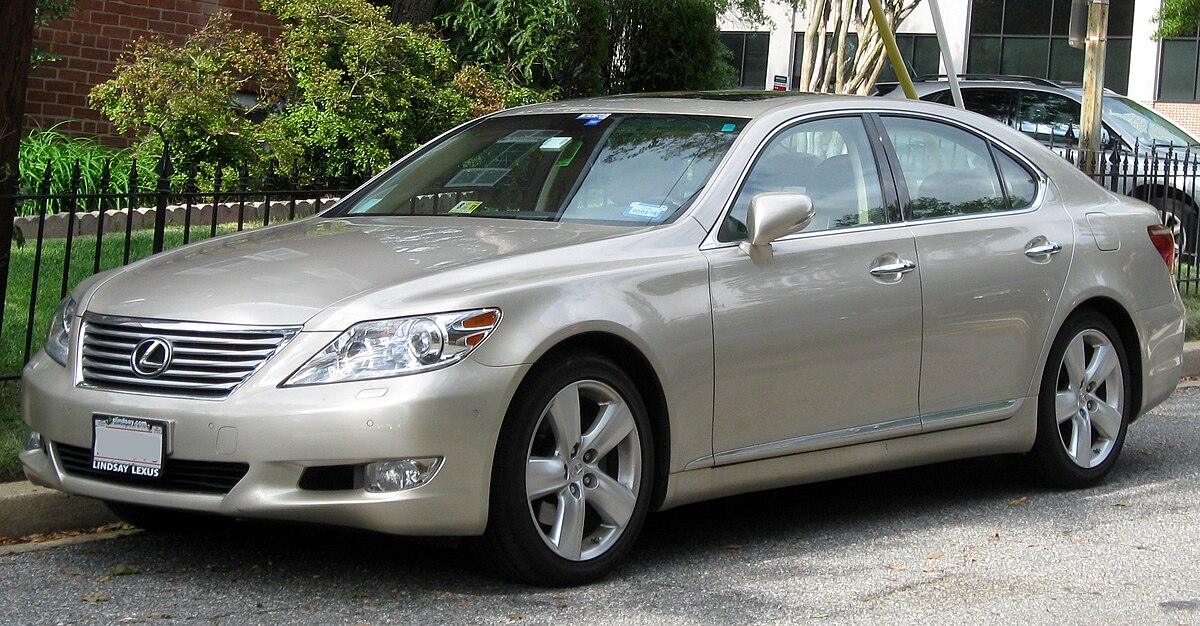
Owners routinely report 300,000+ mile examples that maintain their bank-vault door closures, whisper-quiet operation, and supple leather interiors with minimal degradation.
The vehicle’s complex electronic systems often the Achilles’ heel of luxury automobiles demonstrate unusual resilience, with climate controls, infotainment interfaces, and sophisticated driver aids functioning properly decades after manufacture.
This exceptional longevity stems from Toyota’s “kaizen” philosophy of continuous improvement applied to the luxury segment, resulting in obsessive attention to detail during both design and manufacturing.
Each component undergoes rigorous testing far exceeding industry norms, while assembly processes prioritize precision over production speed.
For owners, this translates to a vehicle that can deliver true luxury experiences well past the quarter-million-mile mark with maintenance costs that, while higher than mainstream vehicles, remain remarkably reasonable compared to European competitors.
For discerning buyers seeking both opulence and obstinate reliability, the LS represents perhaps the ultimate expression of sustainable luxury in the automotive sphere.
Also Read: 5 Family Cars That Last and 5 That Constantly Need Work
5. Ford F-150 (with V8 engine)
The Ford F-150 equipped with the venerable V8 engine options particularly the 5.0L “Coyote” and earlier 4.6L and 5.4L Triton engines has rightfully earned its place among vehicles capable of extraordinary service lives exceeding 250,000 miles.
As America’s perennial best-selling vehicle, the F-150’s longevity credentials are supported by countless examples performing demanding work duties for decades without major mechanical failures.
The truck’s body-on-frame construction provides fundamental durability advantages, allowing it to withstand the rigors of heavy hauling, towing, and off-road use that would compromise unibody vehicles.
What distinguishes high-mileage F-150s is their ability to maintain functionality and performance well past normal replacement intervals.
The V8 powerplants, while not the most fuel-efficient options, deliver exceptional durability through robust internal components, efficient cooling systems, and conservative factory tuning that leaves substantial mechanical margin.
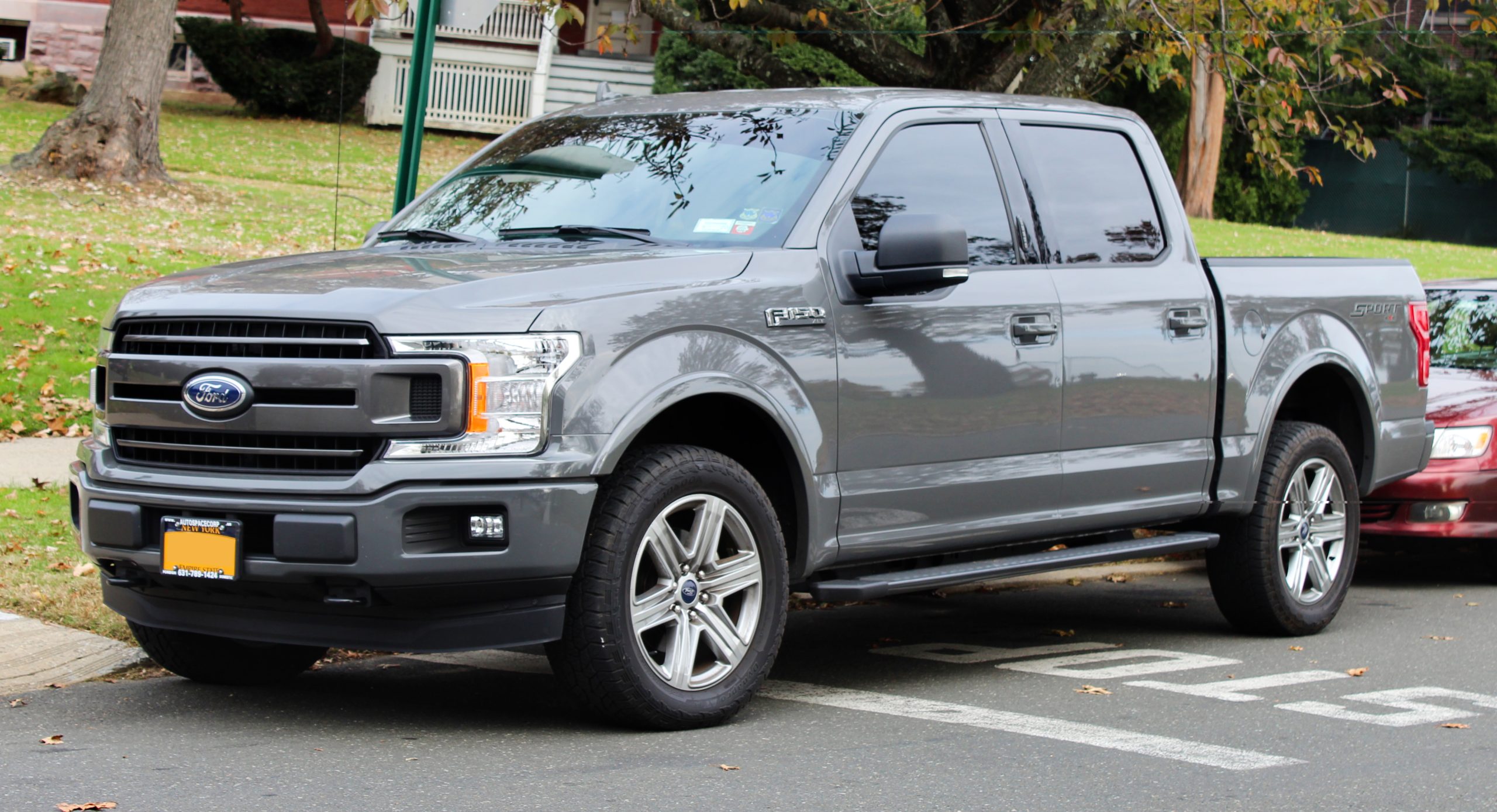
These engines typically maintain stable compression readings and oil consumption patterns even after hundreds of thousands of miles, particularly when owners adhere to maintenance schedules.
The truck’s drivetrain components demonstrate similar longevity, with transmissions (particularly the 6R80 six-speed automatic) and transfer cases routinely matching the engine’s service life when properly maintained.
Even the F-150’s traditionally problematic areas, such as suspension components and electrical systems, have seen significant improvements in recent generations.
Owners attribute exceptional longevity to several factors: regular fluid maintenance, prompt addressing of minor issues, and the inherent serviceability of these trucks, which allows for cost-effective repairs even at high mileages.
For those seeking a hardworking vehicle capable of providing reliable service well beyond typical replacement intervals, the V8-powered F-150 represents an excellent balance of capability, availability of parts, and fundamental mechanical durability.
Cars That Fall Apart Early
1. Range Rover (Recent Models)
The modern Range Rover presents a study in contrasts combining breathtaking design, unmatched prestige, and remarkable off-road capability with an unfortunate propensity for premature mechanical and electronic failures that begin plaguing many examples before they reach 60,000 miles.
Despite their six-figure price tags, these luxury SUVs have developed a notorious reputation for spending excessive time in service departments, with issues often beginning shortly after warranty coverage expires.
The vehicle’s sophisticated air suspension system represents a particular pain point, with many owners reporting complete failures requiring multi-thousand-dollar repairs before reaching 100,000 miles.
The Range Rover’s complex electrical architecture proves equally problematic, with touchscreen infotainment systems, electronic climate controls, and sophisticated driver assistance features developing erratic behavior that proves difficult and expensive to diagnose.
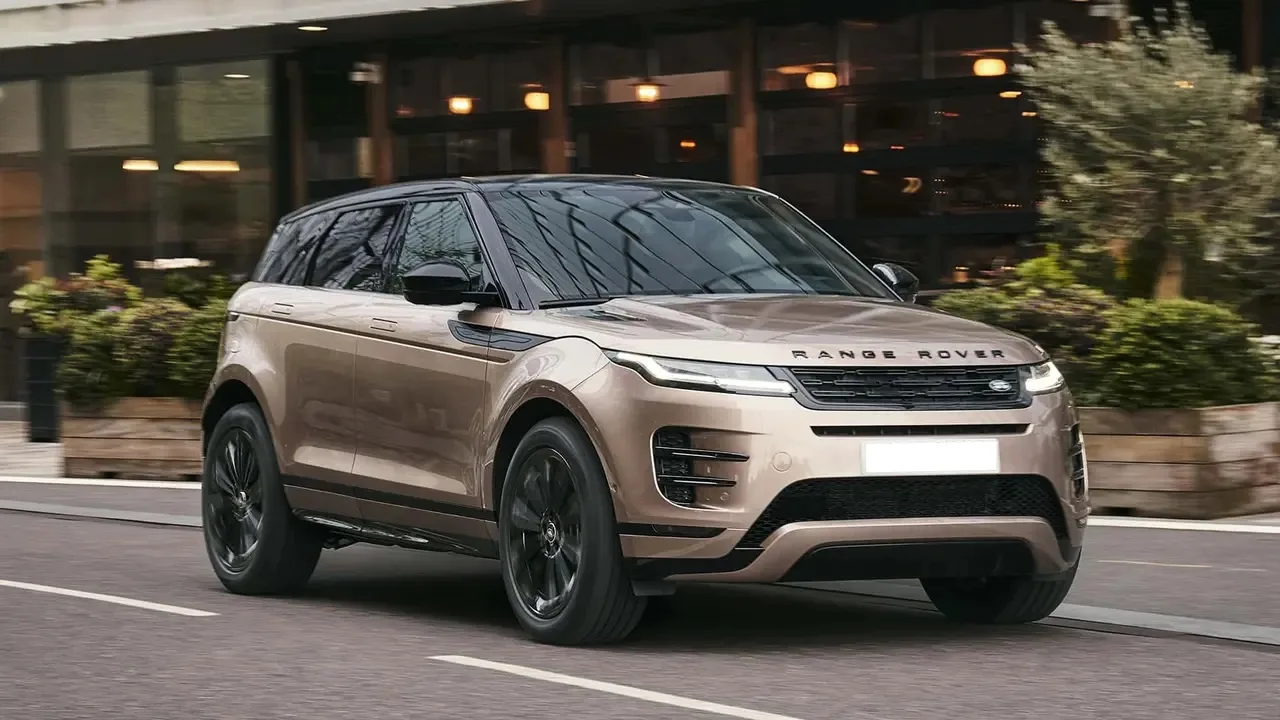
Even fundamental mechanical components demonstrate concerning failure patterns, with timing chain issues in the 5.0L supercharged V8 engine and transmission problems in certain model years requiring complete replacements at mileages where competitors are just hitting their stride.
Water leaks present another persistent issue, with many owners reporting moisture intrusion through sunroofs, door seals, and body seams, leading to interior damage and accelerated electronic failures.
This premature deterioration is particularly frustrating given the vehicle’s exceptional initial quality impressions and status as a flagship luxury product.
While Land Rover has made efforts to address these concerns in recent model years, the brand continues to rank near the bottom in major reliability studies.
For prospective buyers, the Range Rover’s unmatched presence and capability must be weighed against substantial evidence suggesting these vehicles may deliver a problematic ownership experience with extensive downtime and repair costs accumulating at a fraction of the mileage where more reliable alternatives continue performing flawlessly.
2. Nissan Altima (2013-2018 with CVT)
The 2013-2018 Nissan Altima equipped with the company’s continuously variable transmission (CVT) has earned an unfortunate reputation as one of the most problematic mainstream sedans of its era, with transmission failures routinely occurring between 60,000 and 100,000 miles far earlier than competitors typically experience major powertrain issues.
The central culprit in this premature deterioration is the Jatco-manufactured CVT, which exhibits a pattern of overheating, shuddering, and eventually complete failure requiring replacement at costs often exceeding $4,000.
These transmissions typically begin showing warning signs through hesitation during acceleration, unusual vibration at steady speeds, and a characteristic whining noise that owners quickly learn precedes catastrophic failure.
Beyond the notorious transmission issues, these Altimas demonstrate concerning patterns of premature wear across multiple systems. The vehicle’s electronic components, particularly the infotainment system and climate control modules, develop erratic behavior and outright failures at relatively low mileages.
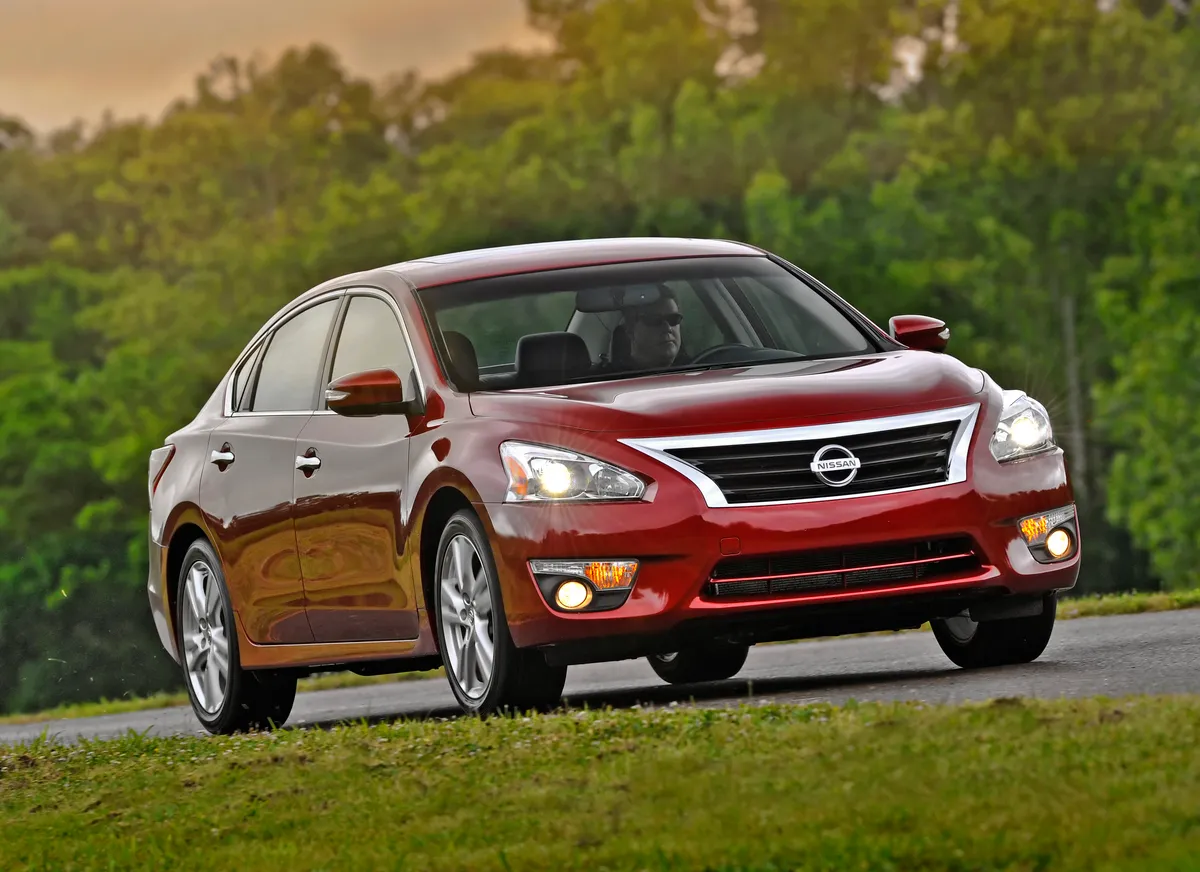
Interior materials deteriorate at an accelerated pace, with dashboard cracking, headliner separation, and seat fabric wear occurring before 100,000 miles in many examples.
Even fundamental mechanical components like engine mounts, suspension bushings, and exhaust system hangers demonstrate premature fatigue, creating a cascade of repair needs that quickly erode any initial purchase savings.
Nissan did extend warranty coverage for some CVT transmissions to 10 years/120,000 miles after widespread complaints, but this addressed only the most serious issue among multiple durability concerns.
For prospective used car shoppers, these Altimas present significant financial risks despite their attractive initial depreciation, as maintenance costs typically accelerate dramatically after 60,000 miles.
The model serves as a cautionary tale in automotive engineering where cost-cutting measures and unresolved design flaws can transform what appears to be a value-oriented family sedan into a nightmare of reliability concerns and diminishing returns long before reaching the mileage thresholds that more durable competitors routinely achieve.
3. Chrysler 200
The Chrysler 200, particularly in its second generation (2015-2017), emerged as one of the most problematic midsize sedans of its era, with many examples developing significant mechanical and electrical issues before reaching 100,000 miles.
At the center of these reliability concerns was the nine-speed automatic transmission manufactured by ZF but calibrated by Chrysler, which exhibited widespread problems, including harsh shifting, unexpected lurching, and complete failures requiring replacement at costs often exceeding $3,500.
These transmission issues typically began manifesting around 30,000-60,000 miles, an exceptionally early failure point for a major powertrain component.
Beyond the transmission woes, the 200 demonstrated concerning patterns of electrical system failures, with owners reporting erratic behavior from the electronic shifter, infotainment system freezes, and intermittent sensor malfunctions that proved difficult to diagnose.

The vehicle’s 2.4L Tigershark four-cylinder engine developed a reputation for excessive oil consumption, sometimes requiring up to a quart of oil every 1,000 miles—a condition that accelerated wear on internal components and led to premature engine failures in some cases.
Even the vehicle’s structural elements showed signs of premature deterioration, with suspension components wearing at accelerated rates and interior materials degrading far earlier than class competitors.
What made the 200’s reliability issues particularly problematic was Chrysler’s discontinuation of the model after just three years of production, leaving owners with dwindling factory support and parts availability concerns.
This shortened production run, combined with widespread reliability concerns, created a perfect storm of rapid depreciation with three-year-old examples often worth less than 30% of their original MSRP.
For used car shoppers, the 200 represents a cautionary tale in automotive development, where rushed production schedules, inadequately tested new technologies, and fundamental engineering compromises can create vehicles that begin deteriorating almost immediately after leaving dealership lots, leaving owners facing repair bills that often exceed the vehicle’s diminishing market value.
4. Mini Cooper S (2007-2013)
The 2007-2013 Mini Cooper S models, while delivering undeniable charm and exhilarating driving dynamics, have earned a reputation for remarkable mechanical fragility, with many examples developing multiple significant failures before reaching 100,000 miles.
At the heart of these reliability concerns is the Prince-family turbocharged 1.6-liter engine developed jointly with PSA Peugeot Citroën, which exhibits a constellation of serious issues including timing chain failures, excessive oil consumption, carbon buildup on intake valves, and premature turbocharger deterioration.
These engine problems often manifest between 50,000 and 80,000 miles, a fraction of the lifespan owners might reasonably expect from a premium-priced vehicle.
The Cooper S compounds these powertrain concerns with equally problematic electrical systems, featuring notorious water leaks through the firewall and sunroof that damage electronic modules controlling everything from power windows to engine management.
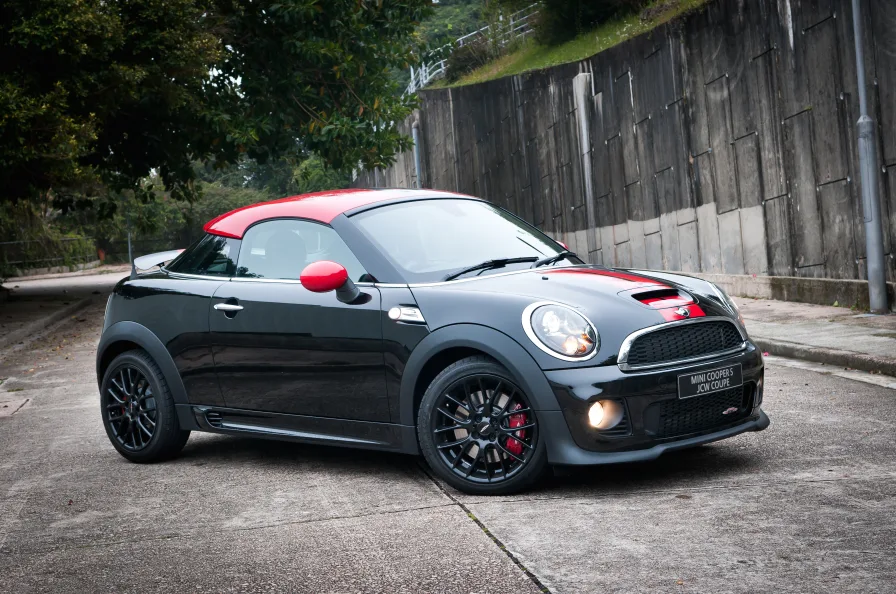
High-pressure fuel pump failures represent another common issue, causing stalling, hard starting, and potential catalytic converter damage when not addressed promptly.
Even seemingly minor components like thermostat housings, water pumps, and transmission mounts fail at accelerated rates, creating a cascading effect of repair needs that quickly escalate beyond the vehicle’s diminishing market value.
What makes these Mini Cooper S models particularly frustrating for owners is the combination of premium purchase prices, expensive dealer-only parts, and labor-intensive repair procedures that require disassembly of multiple components to access failure points.
Many routine maintenance procedures that take minutes on conventional vehicles require hours on these Minis due to cramped engine compartments and complex component integration.
While the vehicle’s distinctive styling and engaging driving experience continue attracting enthusiastic buyers to the used market, prospective purchasers should approach these models with extreme caution.
Understanding that maintenance costs typically accelerate dramatically after 60,000 miles, often transforming what begins as an emotional purchase into a financial liability requiring repair investments disproportionate to the vehicle’s market value.
5. Fiat 500
The Fiat 500, particularly in its first few years after returning to the North American market (2011-2014), quickly developed a reputation for premature mechanical and electrical failures that began plaguing many examples before they reached 60,000 miles.
Despite its charming retro styling and European flair, the diminutive Fiat demonstrated a constellation of reliability issues centered around its MultiAir 1.4-liter engine, which commonly developed oil leaks from multiple gaskets, timing cover seals, and the oil filter housing.
More concerning were the MultiAir system failures, the innovative but complex variable valve timing mechanism that could require complete replacement at costs often exceeding $1,500 when it malfunctioned, typically between 50,000-70,000 miles.
Electrical gremlins proved equally problematic, with power window regulators, door lock actuators, and dashboard electronics developing erratic behavior or complete failures well before 100,000 miles.
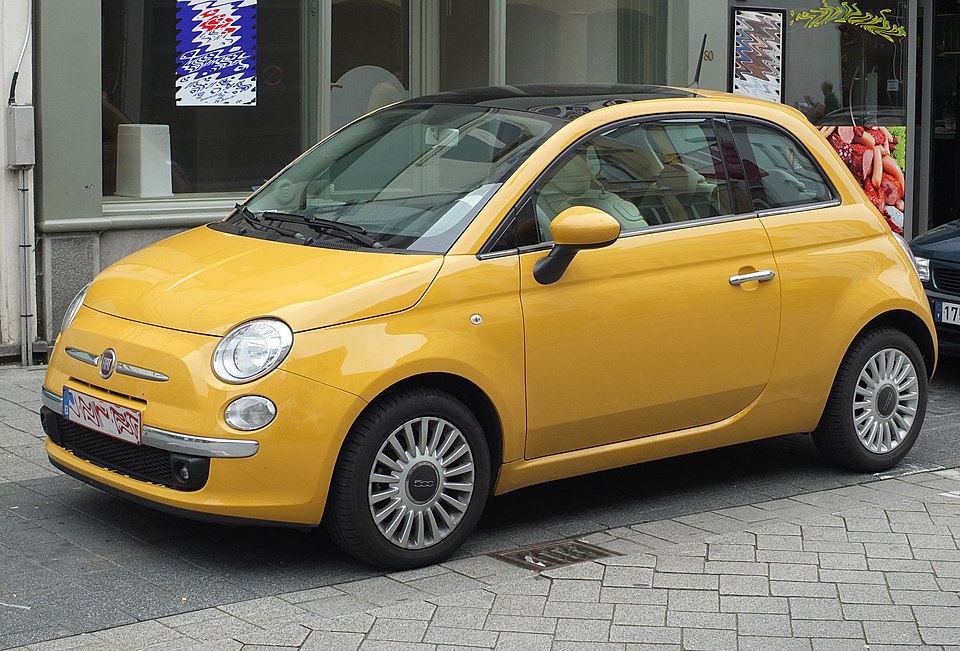
The 500’s transmission options both presented unique concerns: the manual transmission exhibited premature clutch wear even under normal driving conditions, while the automated manual transmission (marketed as “AISIN automatic”) became notorious for rough shifting, engagement hesitation, and complete failures requiring replacement at costs approaching $4,000.
Interior components demonstrated similar fragility, with seat mechanisms breaking, trim pieces detaching, and climate control systems developing refrigerant leaks at mileages where competing vehicles typically remain trouble-free.
The 500’s premature deterioration was compounded by Fiat’s limited dealer network in North America, creating parts availability challenges and service delays that extended vehicle downtime.
This combination of mechanical fragility and support limitations created extraordinary depreciation rates, with three-year-old examples often worth less than 30% of their original MSRP, a market response reflecting widespread reliability concerns.
For used car shoppers, the Fiat 500 represents a cautionary example of how appealing aesthetics and European heritage can mask fundamental engineering and manufacturing shortcomings that manifest as a cascade of repair needs beginning almost immediately after warranty coverage expires, transforming what appears to be an affordable, stylish city car into a financial liability requiring constant attention and investment.
Also Read: 5 Entry-Level Cars That Feel Premium and 5 That Feel Cheap

